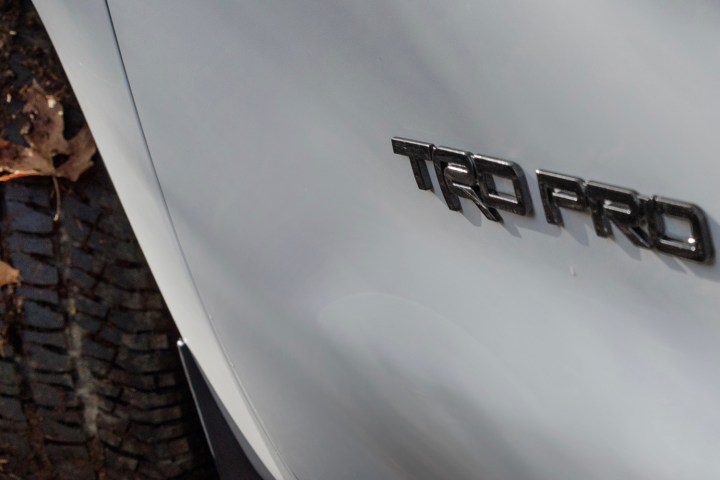 The Toyota TRD Pro line adds genuine off-road capability to a handful of the Japanese automaker’s vehicles, and the lineup is about to get a new addition. Toyota promises to bring a “new TRD Pro off-road beast” to the 2019 Chicago Auto Show, as well as changes to the entire lineup for the 2020 model year. So which Toyota model will get the TRD treatment?
The Toyota TRD Pro line adds genuine off-road capability to a handful of the Japanese automaker’s vehicles, and the lineup is about to get a new addition. Toyota promises to bring a “new TRD Pro off-road beast” to the 2019 Chicago Auto Show, as well as changes to the entire lineup for the 2020 model year. So which Toyota model will get the TRD treatment?
The 2020 Toyota Tacoma pickup truck will also debut in Chicago, but the current Tacoma already has a TRD Pro variant. So a 2020 Tacoma TRD Pro doesn’t exactly qualify as “new.” Toyota’s other truck, the Tundra, also has its own TRD Pro model, as does the 4Runner SUV. That leaves the Land Cruiser and Sequoia SUVs and RAV4 and Highlander crossovers as possible candidates.
The Land Cruiser and Sequoia seem more likely than the Highlander or RAV4. While Toyota has tried to imbue the RAV4 with some off-road capability, it and the Highlander were really designed for on-road driving. The Land Cruiser and Sequoia, on the other hand, are traditional SUVs that are better suited to off-roading. The Land Cruiser has been Toyota’s rival to Jeeps and Land Rovers for decades.
While the Land Cruiser already boasts plenty of off-road capability out of the box, it’s just as likely that the Sequoia will get the TRD Pro treatment. The Sequoia is essentially a Tundra with an SUV body, meaning most of the components from the Tundra TRD Pro should bolt on relatively easily. Toyota has also already announced a Land Cruiser model for the Chicago Auto Show — the retro-themed Heritage Edition.
TRD is short for Toyota Racing Development, and it has the pedigree to back up that name. TRD has multiple Baja 1000 off-road race victories on its resumé, and currently runs Toyota’s NASCAR program. In other words, it’s the real deal.
The current line of TRD Pro models include upgrades like beefier shock absorbers and model-specific wheel and tire setups, as well as the obligatory TRD badging and exterior styling tweaks. The new TRD Pro model will likely get similar upgrades, but we’ll have to wait until its debut at the 2019 Chicago Auto Show to know for sure.
Editors' Recommendations
- Jeep built a monster electric prototype to show what EVs can really do off-road
- New York Auto Show postponed due to coronavirus concerns
- What I saw at the LA Auto Show gives me hope for humanity
- 2020 Audi E-Tron Sportback, RS Q8 confirmed for 2019 LA Auto Show
- Everything to get excited about at 2019 LA Auto Show


